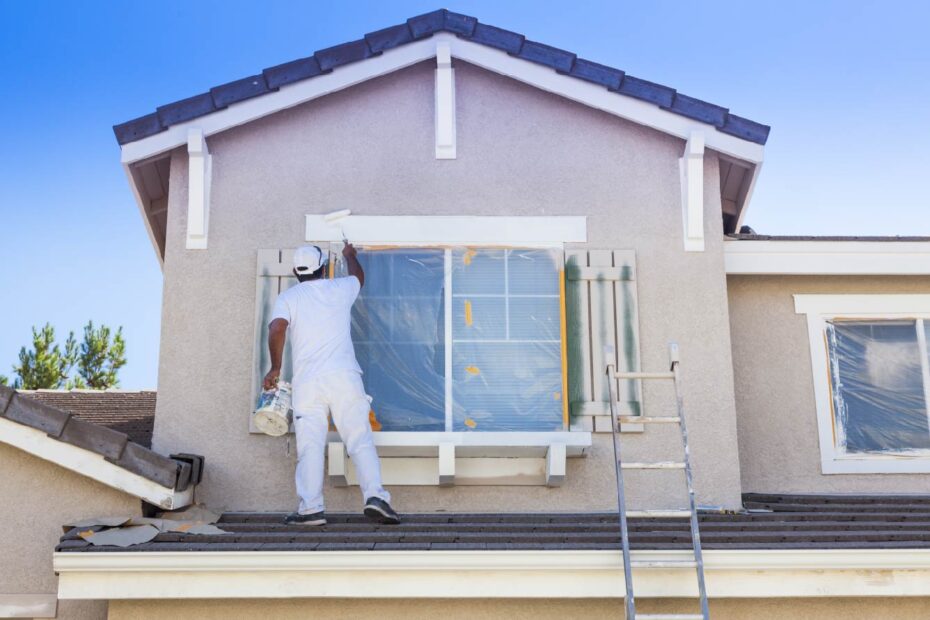Paint and water are not compatible. People wait for the right weather to paint, but waiting will most likely cause your house not to get painted.
You may wonder if it’s possible to paint even when it rains. What impact will rain have upon the final colour?
These are five important things to keep in mind when working under less-than ideal conditions
- Never paint a wet surface.
- Never paint on a surface which has been rained om in the last 4 hours.
- The weather outside can have little effect on interior painting.
- The paint job won’t be affected by humidity, but surface condensation will affect it.
- The paint curing process can be affected if temperatures fall below 10°C or above 35°C.
After rain, when is the best time to paint your exterior?
It is best to not paint exterior walls when it is actively raining. It takes at least 4 hours for surfaces to dry. It is important to wait 24 hours as the timeframe varies depending upon weather conditions.
You should treat condensation as rain when it is humid. Allow the surface to dry for at least 4 to 24 hours before painting.
What do you do when it has rained recently
Even if there isn’t any visible moisture, it can still have an impact on your paint application.
An outside wall that is exposed to direct sunshine should dry in less than 4 hours. Walls that are exposed to temperatures above 25 degrees C should dry in just four hours. For best results, wait at least 1 day. Flat surfaces dry fast. Other areas, like those with grooves and trims, nail holes, cracks or other imperfections, may take longer to dry.
What happens to a wet surface if you paint it?
The paint’s finish will be affected if water gets on the freshly painted surface. You will need to apply another coat of painting to fix this.
Can I paint in the rain?
It is fine to paint indoors when it rains. But there are some things to consider. You should close all windows that are not closed.
Planning to Paint
It is best to stop painting when there is even one grey cloud in the sky. This may not be possible if your area receives a lot of rain.
The climate conditions at your place, such as moisture and temperature, will determine the best time to paint your house. This does not depend on the season. Even though weather forecasts can sometimes be inaccurate, they are usually reliable enough to help you make your decisions.
How Temperature Effects Paint
The temperate climate of Australia should not affect paint drying.
Painting performance can be affected if the home is too hot. During the painting process, it is important that the wall temperature be maintained at least 10°C and no lower 35°C.
Acrylics in Hot Weather
Paint can be treated with thinner for hot weather to help slow down drying. Acrylics should be touch-dry within 20 minutes at 25°C with 50% humidity. The drying process is faster during the hottest months.
Here are some Summer Painting Tips
- Avoid painting on hot surfaces and in direct sunlight.
- Follow the shade.
- Add 5% water to your paint for a thin and slow drying coat.
- Use two brushes. Use one, keep the other in warm water, and rotate as needed.
Acrylic Paints are Best for Exterior Use
Acrylics are recommended for exterior usage as other options like oil-based enamels tend to crack and flake off the surface. Acrylics retain colour better than oil-based enamels.
Acrylic paints with UV protection are best for long-lasting results.
Restoring a Rained-on Surface
Paint can be affected by water, which can lead to paint becoming brittle and drying in a different shade.
First, wait until the paint is completely dry. You can then use a razor to get rid of any raised lines. It may be necessary to light sand. It can be repainted once the surface has completely dried.
